If you’re looking to add a touch of gourmet flavor to your garden and your meals, tarragon is the herb you need. Known for its distinctive anise-like aroma and slightly peppery taste, tarragon is a culinary favorite that pairs beautifully with chicken, fish, eggs, and creamy sauces. But beyond its kitchen charm, tarragon is a low-maintenance, hardy herb that’s easy to grow from seed or cuttings and perfect for container or garden cultivation.
In this comprehensive guide, we’ll take you through everything you need to know — from growing tarragon from seeds or cuttings, to caring for it, harvesting, and using it in delicious dishes. By the end, you’ll see why this elegant herb deserves a spot in every home garden and kitchen.
What Is Tarragon?
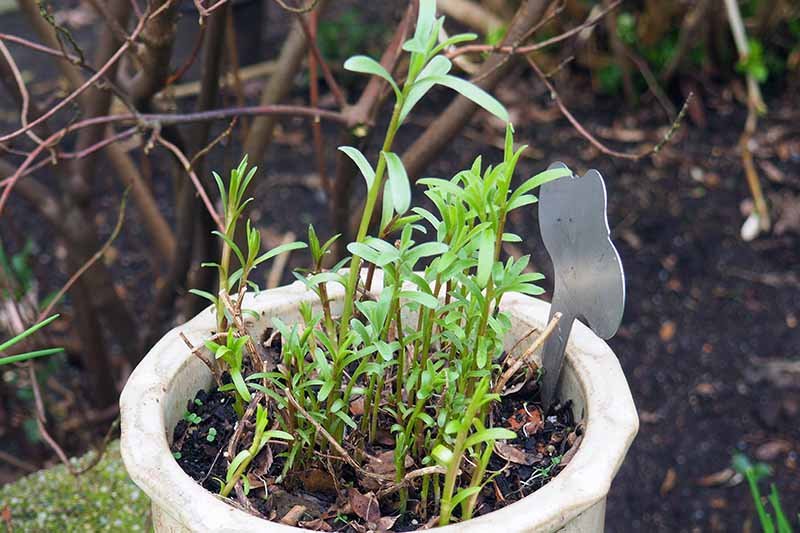
Tarragon (Artemisia dracunculus) is a perennial herb belonging to the Asteraceae family, the same family as daisies and sunflowers. Native to Eurasia, it has become a staple in French cuisine — so much so that it’s one of the “fines herbes” of classic French cooking, alongside chervil, parsley, and chives.
There are two main types of tarragon:
- French Tarragon (Artemisia dracunculus var. sativa) – The most flavorful and commonly used in cooking. It has a sweet, licorice-like taste.
- Russian Tarragon (Artemisia dracunculoides) – Easier to grow from seed but milder and less aromatic.
- Mexican Tarragon (Tagetes lucida) – A tropical alternative with a similar flavor profile, often used in warmer climates.
If your goal is culinary quality, always go for French tarragon, even though it’s propagated through cuttings or root division rather than seeds.
Ideal Growing Conditions for Tarragon
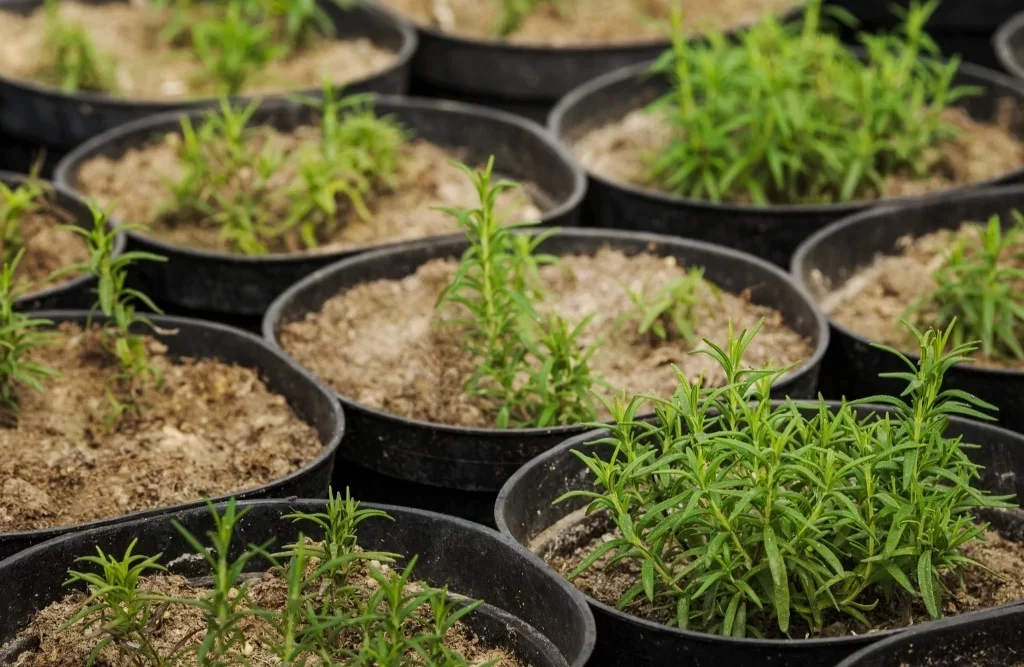
Tarragon loves sunshine, warmth, and well-drained soil. It’s surprisingly resilient and adapts well to container growing, raised beds, or traditional garden plots.
Sunlight
- Tarragon thrives in full sun — aim for at least 6–8 hours of sunlight daily.
- In very hot climates, partial shade during peak afternoon hours can prevent leaf scorching.
Soil
- Prefers light, sandy or loamy soil with good drainage.
- Ideal pH: 6.5–7.5 (slightly alkaline).
- Avoid heavy clay soils that retain moisture — tarragon’s roots dislike sitting in water.
Temperature
- Grows best in 18–27°C (65–80°F).
- It can tolerate mild frost but should be protected or overwintered indoors in very cold regions.
Growing Tarragon from Seed
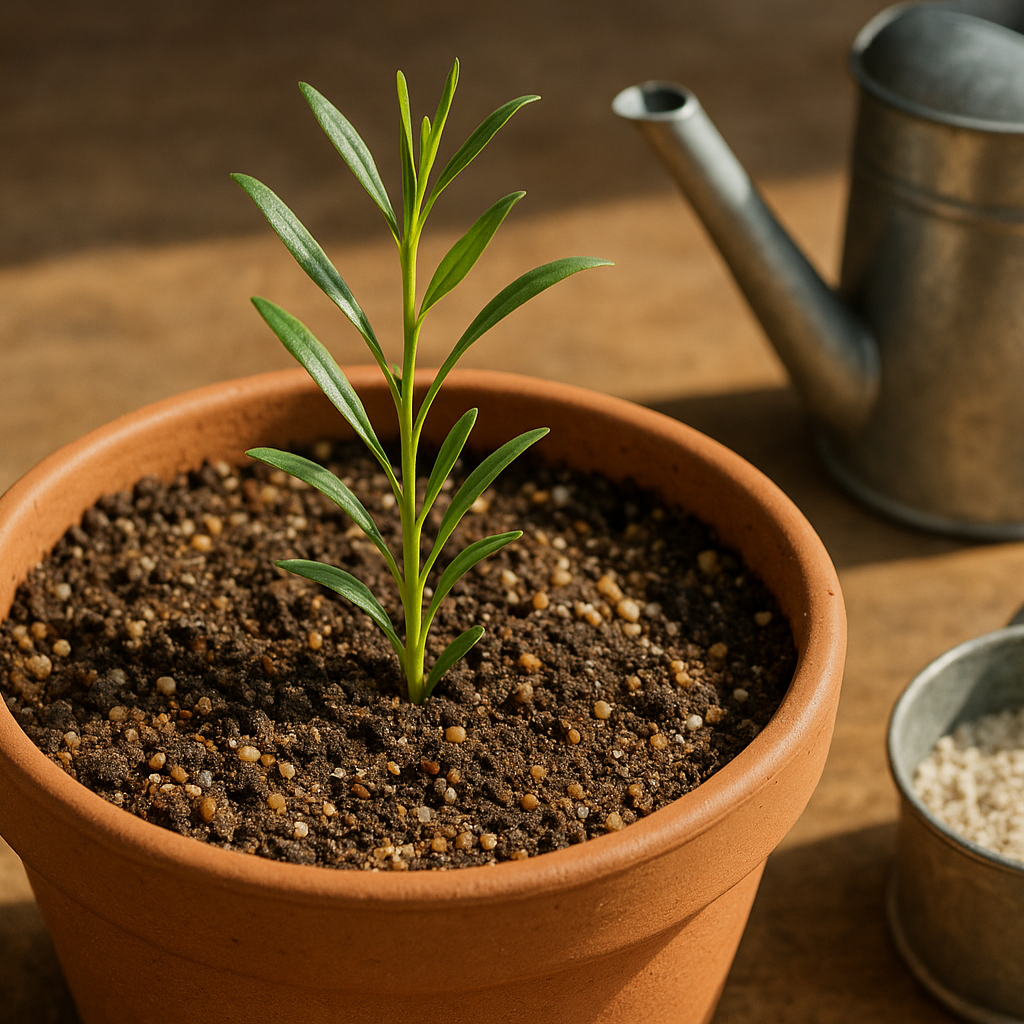
If you’re growing Russian or Mexican tarragon, you can start from seeds. French tarragon, on the other hand, doesn’t produce viable seeds, so it’s propagated through cuttings or root division (explained in the next section).
Steps to Grow Tarragon from Seeds:
- Sow Indoors: Start seeds indoors about 6–8 weeks before the last frost date.
- Prepare Soil: Use a seed tray with light potting mix and a little sand or perlite for drainage.
- Sow Seeds Lightly: Sprinkle seeds on the surface and press them gently into the soil — they need light to germinate.
- Moisture & Temperature: Keep the soil moist but not soggy and maintain a temperature around 20°C (68°F).
- Germination: Seeds usually sprout within 10–14 days.
- Transplanting: Once seedlings are about 3–4 inches tall and the weather has warmed, harden them off and transplant into pots or the garden, spacing each plant 12–18 inches apart.
If growing French tarragon, skip to propagation methods below.
Growing Tarragon from Cuttings or Root Division
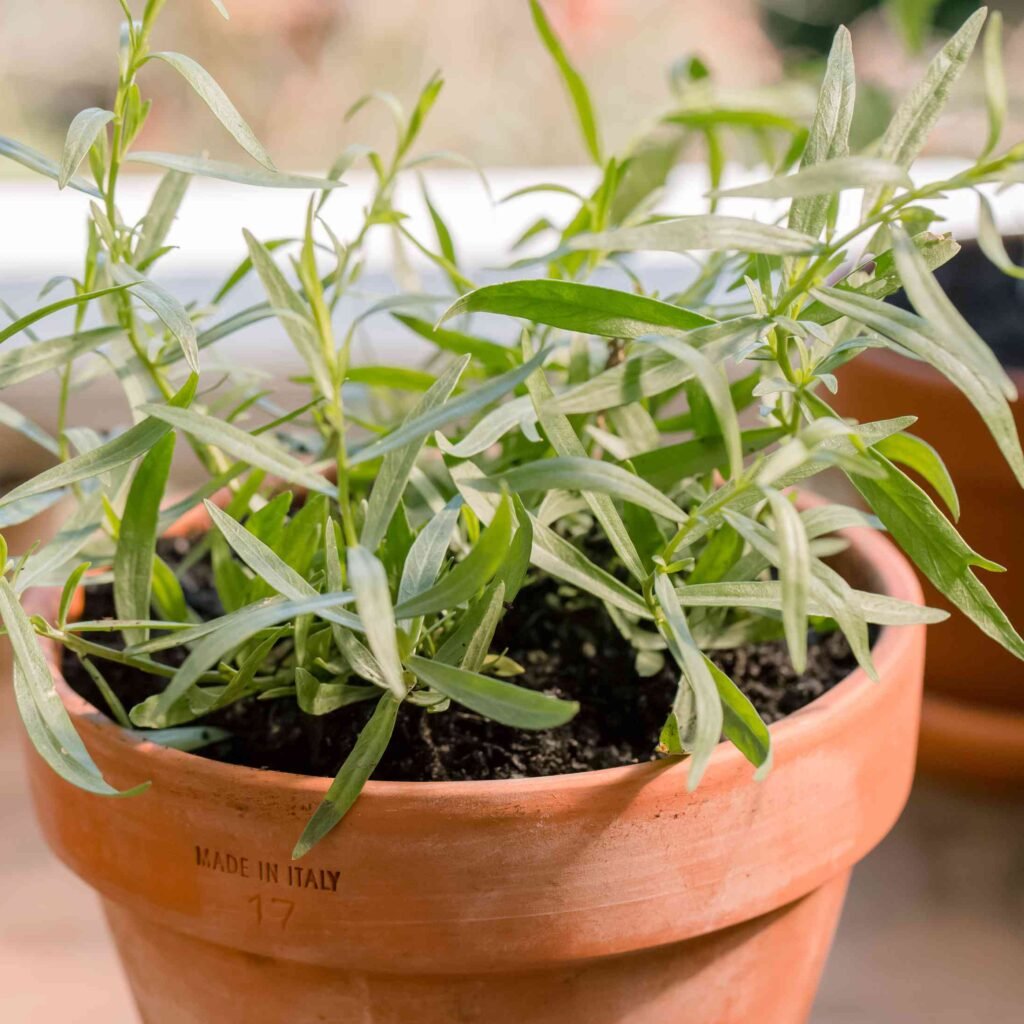
Since French tarragon doesn’t produce seeds, it’s best grown from cuttings or by dividing the roots of an established plant.
Propagation by Cuttings:
- In spring, take a 4–6 inch cutting from a healthy, non-flowering stem.
- Remove the lower leaves, leaving only the top set.
- Dip the cut end in rooting hormone powder (optional) to encourage faster rooting.
- Plant the cutting in a pot filled with moist, well-draining potting mix (equal parts compost, perlite, and sand).
- Cover with a plastic bag or humidity dome to retain moisture.
- Place in a bright, warm location but out of direct sunlight.
- Roots will form in 2–3 weeks, after which you can transplant your new tarragon plant into a larger container or garden bed.
Propagation by Root Division:
- In early spring, gently dig up an established tarragon plant.
- Divide the root ball into 2–3 sections, ensuring each section has healthy roots and shoots.
- Replant each division immediately, spacing them 12–18 inches apart.
This method is the most reliable way to ensure your new plants have the same strong flavor as the parent French tarragon.
Watering and Fertilizing Tarragon
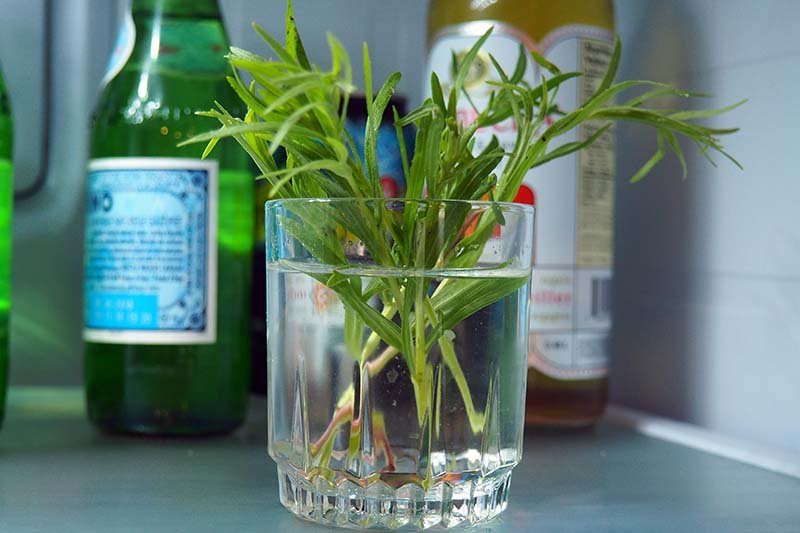
Tarragon is fairly drought-tolerant once established, but regular care helps it thrive.
- Watering: Keep the soil evenly moist during the growing season, but never waterlog the plant. Water deeply when the top inch of soil feels dry.
- Avoid overwatering: Root rot is a common issue when the soil stays wet too long.
- Fertilizing: Tarragon doesn’t need heavy feeding. Apply a light compost top-dressing in spring or use a diluted organic fertilizer once a month during the growing season. Too much fertilizer can make the flavor weak and the growth spindly.
Pruning and Maintenance
Pruning is essential for keeping your tarragon bushy, flavorful, and productive.
Tips for healthy growth:
- Pinch off the growing tips regularly to encourage branching.
- Remove any yellow or old leaves to keep airflow healthy.
- In mid-summer, cut the plant back by one-third to promote fresh new growth.
- Before winter, trim the stems to 4–6 inches tall and cover with mulch or straw if growing outdoors.
Tarragon typically lasts 2–3 years before it begins to lose vigor. At that point, propagate new plants from divisions.
Flowering and Pollination
Tarragon produces small, greenish-yellow flowers in late summer. While attractive, the flowers are not particularly showy — and if your goal is flavorful leaves, it’s best to pinch off flower buds early. Once tarragon starts flowering, the leaves often become less aromatic and slightly bitter.
Harvesting Tarragon
You can start harvesting tarragon leaves once the plant is about 6–8 inches tall.
How to harvest:
- Snip the top few inches of stem, just above a leaf node.
- Always harvest in the morning after dew has dried for the best flavor.
- Don’t remove more than one-third of the plant at a time.
The leaves are most flavorful just before flowering, so harvest heavily at that time for drying or freezing.
Drying and Storing Tarragon
Tarragon’s delicate leaves retain their flavor best when air-dried or frozen, rather than oven-dried.
Air-Drying:
- Bundle small groups of stems together.
- Hang them upside down in a warm, dry, shaded area with good air circulation.
- Once the leaves are crisp, remove them from stems and store them in airtight jars.
Freezing:
- Chop fresh tarragon leaves and freeze them in ice cube trays with a bit of olive oil or water.
- Perfect for adding to soups, sauces, or roasted dishes later.
Properly stored, dried tarragon lasts up to a year without losing much aroma.
Culinary Uses of Tarragon
Tarragon’s distinctive flavor is both sweet and savory, often described as a mix of anise, vanilla, and pepper. It’s widely used in French and Mediterranean cooking.
Here are some delicious ways to use it:
- Tarragon Butter: Mix chopped tarragon with butter, lemon zest, and garlic. Perfect for fish, chicken, or grilled vegetables.
- Tarragon Vinegar: Infuse white wine vinegar with fresh tarragon sprigs for 2–3 weeks. Great for salad dressings and marinades.
- Béarnaise Sauce: A French classic — buttery, tangy, and tarragon-rich — ideal for steak and grilled meats.
- Chicken and Fish Dishes: Tarragon enhances delicate proteins like chicken and salmon beautifully.
- Egg and Potato Dishes: Add finely chopped tarragon to scrambled eggs, omelets, or roasted potatoes for a gourmet twist.
- Herbal Tea: Steep tarragon leaves in hot water with lemon and honey for a soothing herbal tea.
Medicinal and Health Benefits of Tarragon
Beyond its culinary fame, tarragon has impressive health benefits too.
- Digestive Aid: Stimulates appetite and helps ease bloating and indigestion.
- Antioxidant Properties: Rich in polyphenols that protect against free radicals.
- Natural Sleep Aid: Tarragon tea has mild sedative effects that promote restful sleep.
- Anti-Inflammatory: Contains compounds that may reduce joint pain and inflammation.
- Supports Heart Health: Its antioxidants may help regulate cholesterol levels.
Always use tarragon in moderation, especially in tea or concentrated extracts.
Overwintering and Long-Term Care
Tarragon is a perennial, so it can come back year after year with the right care.
- In colder climates, mulch heavily around the base in fall to protect the roots.
- In pots, move your plant indoors to a bright, sunny windowsill during winter.
- Water sparingly during dormancy — just enough to keep the soil from drying out completely.
With minimal effort, your tarragon plant will reward you with lush, fragrant growth season after season.
Companion Planting with Tarragon
Tarragon is also an excellent companion plant in the garden. Its strong aroma helps repel pests like aphids and whiteflies.
Best companions include:
- Basil
- Tomato
- Eggplant
- Peppers
Avoid planting near fennel or dill, as their flavors and scents can clash.
Conclusion
Tarragon truly is a garden-to-kitchen treasure — easy to grow, delightful to cook with, and packed with both flavor and health benefits. Whether you start from seeds, cuttings, or divisions, this elegant herb will quickly become a favorite in your garden and your recipes.
From seed to kitchen, every stage of growing tarragon connects you to the timeless joy of cultivating your own fresh ingredients. So, roll up your sleeves, plant a few tarragon stems, and let your garden fill your meals with the subtle sophistication only this herb can bring.
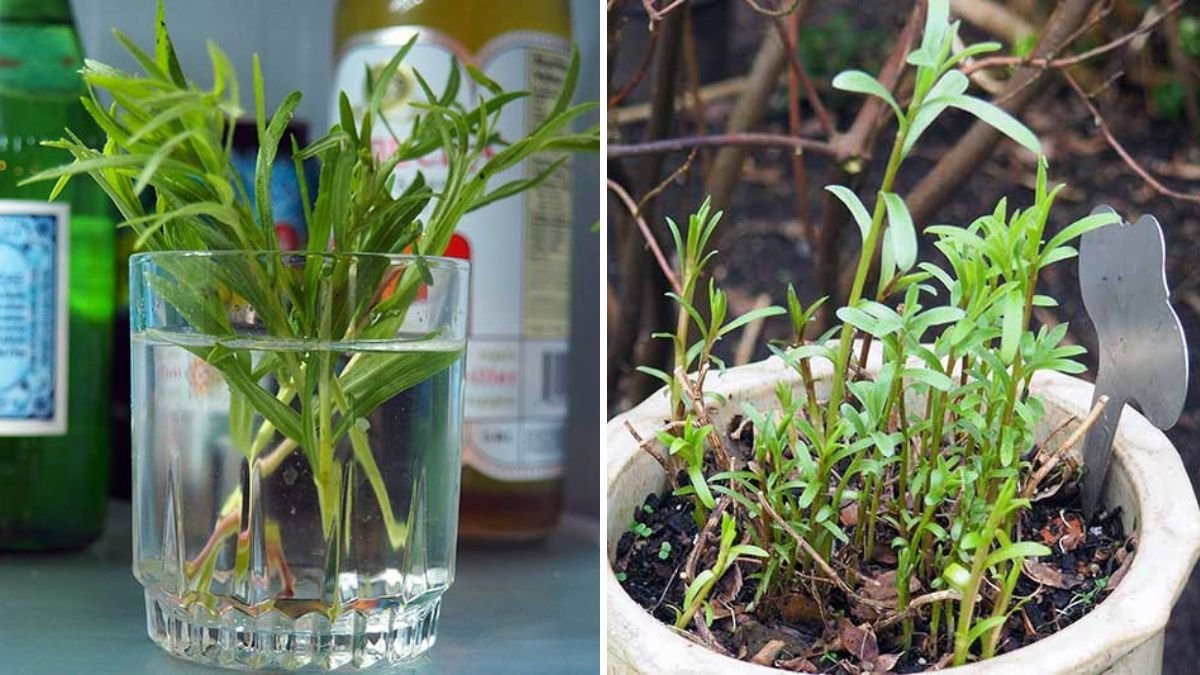





Leave A Comment